Show and Tell – Bird Books and Resources
In mid-May we held our final Show and Tell of the semester, following on from our previous event about treasures discovered by the Lighting the Past team.
The event featured a display of rare books relating to birds – we’ve picked out a few of the more popular items below:
Pierre Belon, L’histoire de la nature des oyseaux, auec leurs descriptions, & naïfs portraicts retirez du naturel: escrite en sept liures, par Piere Belon du Mans, 1555 – Typ FP.B55CB
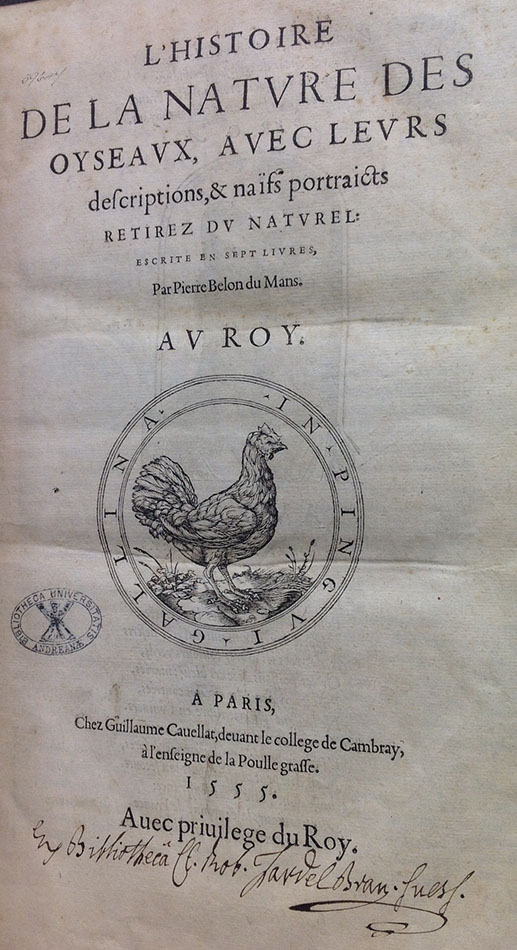 Pierre Belon studied medicine in Paris and became the pupil of the botanist Valerius Cordus at Wittenberg. When Cordus died in 1544, Belon returned to Paris and came under the patronage of the Cardinal of Tournon, who subsidized his study and extensive travel. Belon’s text is a major work in the field of natural history. A pioneer in comparative anatomy, Belon attempted to match the names of birds used by Aristotle and Pliny with the species then in France (hence the captions in Greek). The book is one of the first ornithological compendiums to be based, in part, on field observations and many of the woodcut bird portraits were taken from actual specimens.
Pierre Belon studied medicine in Paris and became the pupil of the botanist Valerius Cordus at Wittenberg. When Cordus died in 1544, Belon returned to Paris and came under the patronage of the Cardinal of Tournon, who subsidized his study and extensive travel. Belon’s text is a major work in the field of natural history. A pioneer in comparative anatomy, Belon attempted to match the names of birds used by Aristotle and Pliny with the species then in France (hence the captions in Greek). The book is one of the first ornithological compendiums to be based, in part, on field observations and many of the woodcut bird portraits were taken from actual specimens.
Francis Willughby Ornithologiae libri tres, 1676 – r17 QL615.W5
One of the first truly scientific ornithological texts. This original Latin version was published in 1676, four years after the death of Francis Willughby (1635–1672) by his friend and collaborator John Ray (1627–1705). The two natural historians had met at Trinity College Cambridge in the 1650s and spent time travelling around Britain and Europe collecting and observing nature.
George Gray, Genera of Birds, 1849 – rf QL674.G8
George Gray was curator of the British Museum’s bird collections from 1831 until his death in 1871. His Genera describes over 8,000 species and was the first attempt to collect together a list of species from all available sources. It is one of the fundamental works of 19th century ornithology.
This was the first book worked on by Joseph Wolf after his move to England in 1848. Joseph Wolf was the first bird artist to understand and use the new freedom of style that lithography allowed. Evoking his childhood love of the countryside and wild creatures, he introduced natural settings and a feeling of motion into his paintings. He breathed life into the stiff “bird on a perch” portrayals so characteristic of bird art of the day.
John Gould, The Birds of Europe, 1832 – rff QL690.A1G7 Vol 1
Lithograph of the Eagle Owl drawn by Edward Lear under the direction of John Gould for the first comprehensive work on European birds. It has been said that Lear projected facets of his own personality into the expressions of birds.
Gould hired Lear to work for him and appropriated Lear’s format and style as his own. All of Lear’s innovations were soon attributed to the more successful Gould and none of his work was credited. After Gould’s death in 1881, Lear wrote, “He was one I never liked really, for in spite of a certain jollity and bonhommie, he was a harsh and violent man.”
John Gould, A monograph of the Trochilidae, or family of humming-birds, 1861 –rff QL696.T8G7 vol 3
John Gould (1804-1881) was a British ornithologist, artist and successful businessman. Sometimes referred to as the “English Audubon,” Gould had an illustrious career in which he served as official taxidermist to King George IV and established himself as Queen Victoria’s favorite illustrator of birds.
One of John Gould’s last great passions was for hummingbirds. He popularised hummingbirds during the Great Exhibition of 1851 with an exhibition of stuffed hummingbirds on display in the Zoological Gardens in Regents Park, a short distance from the Great Exhibition. He took advantage of the crowds going to the Great Exhibition and charged his visitors six pence a time and made a profit of £800. Gould’s exhibit attracted over 75,000 visitors. At the time of his death in 1881 he had an amazing 5,378 hummingbirds in his personal collection.
A Monograph of the Trochilidae was one of the most popular and spectacular of Gould’s great bird books. The five volumes on the hummingbird contain 360 hand-coloured lithographic illustrations. Gould worked with lithographers who applied gold and silver leaf underneath the watercolor to achieve a lifelike illustration of the hummingbird’s iridescent feathers.
We will be running further Show and Tell sessions next semester – keep an eye out on our website, Facebook and Twitter pages, and for the posters around town.
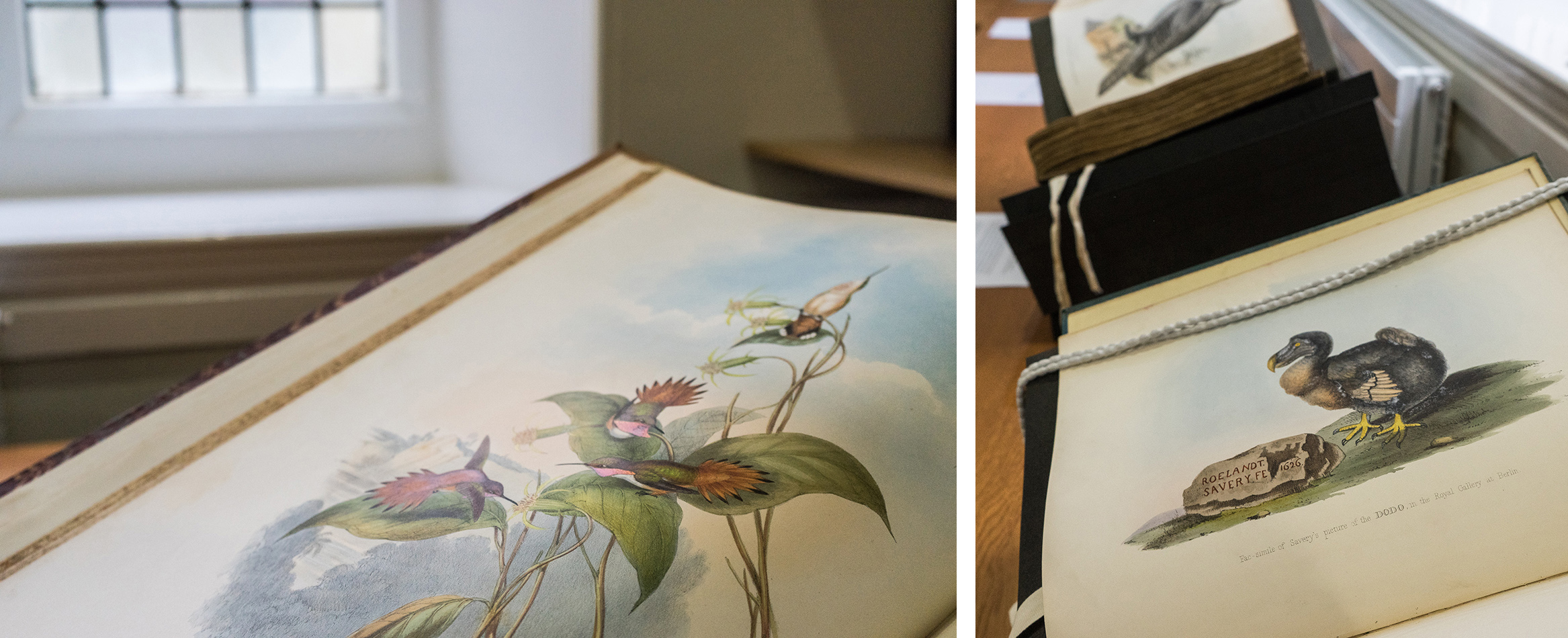
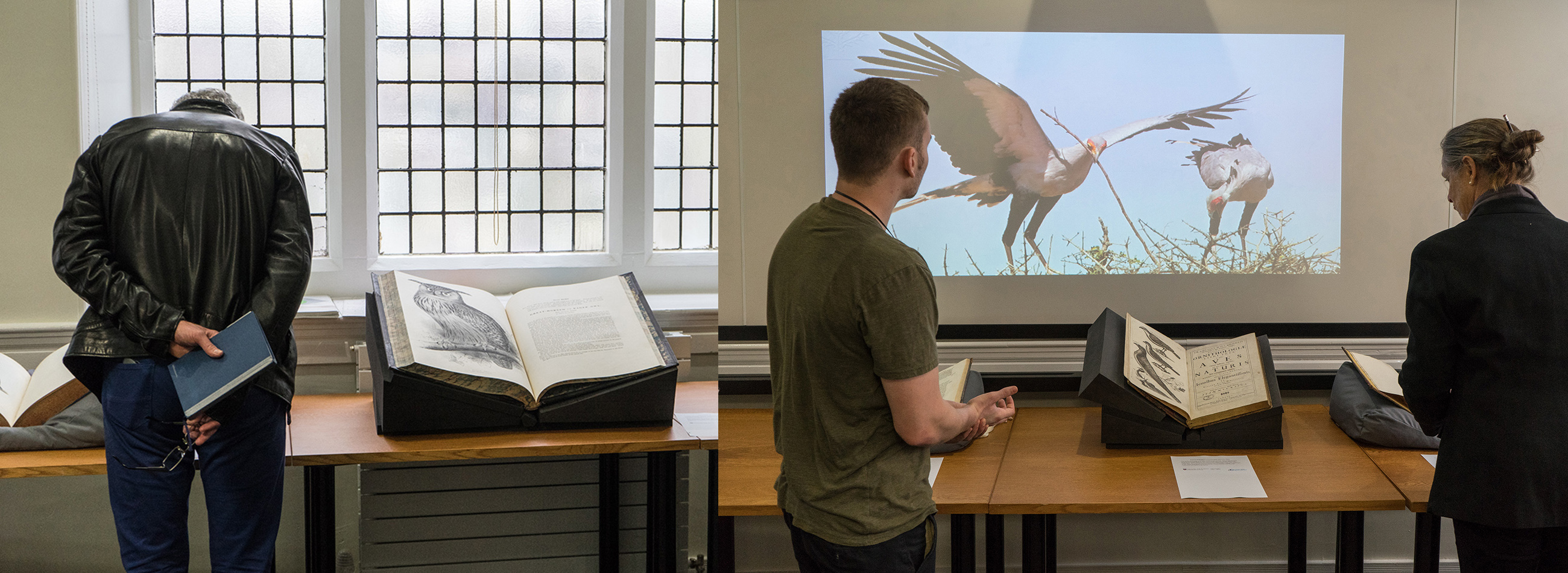
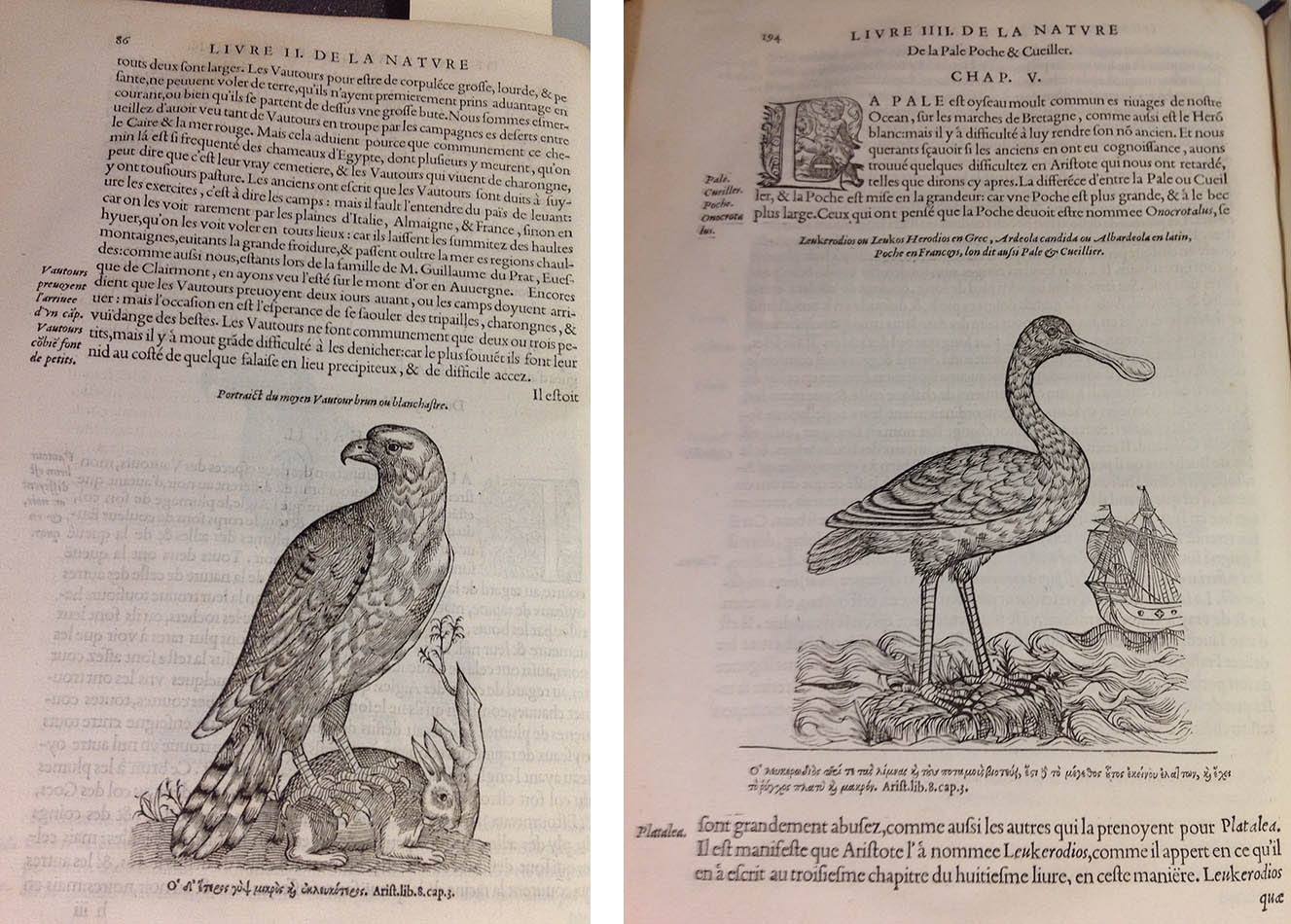
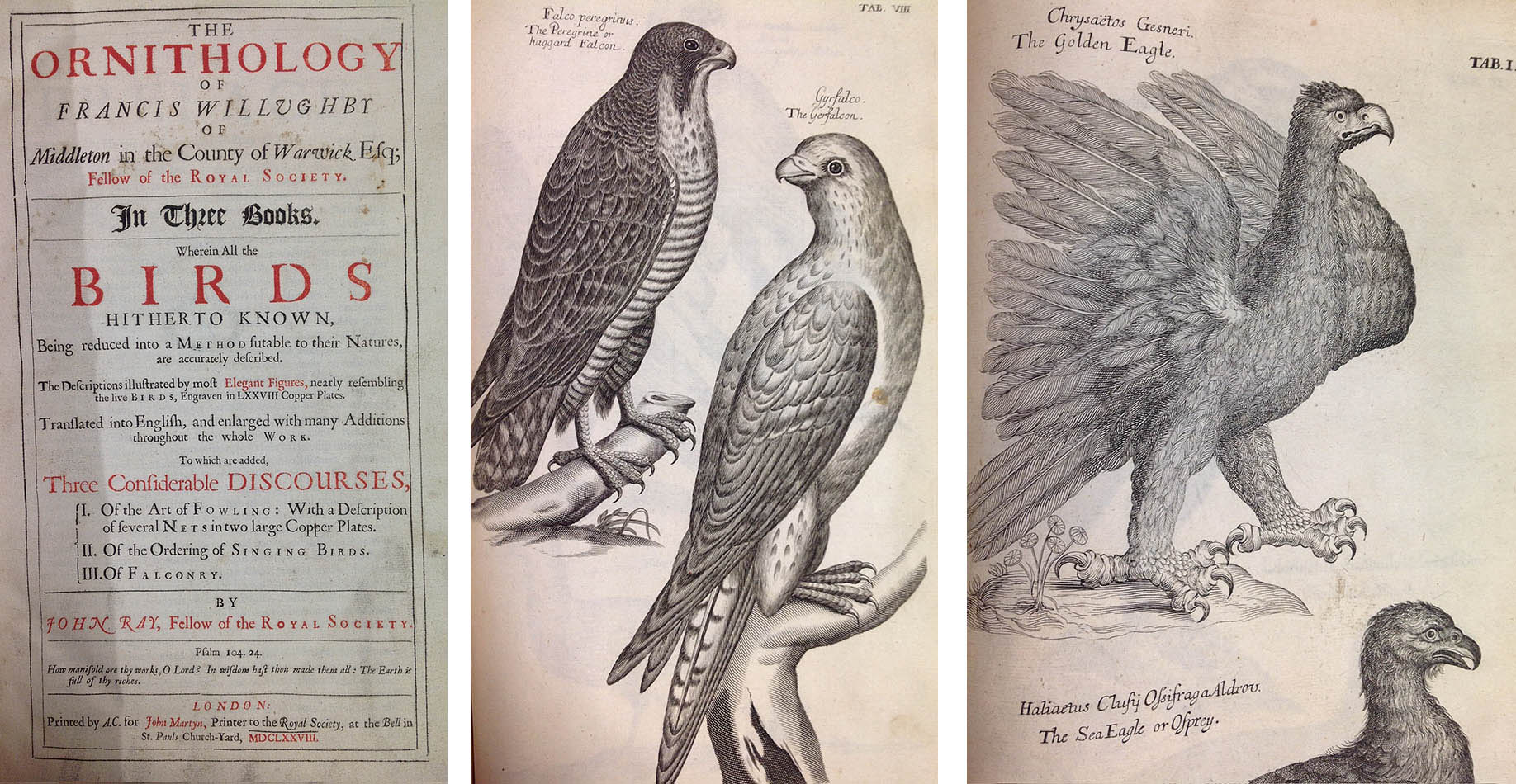
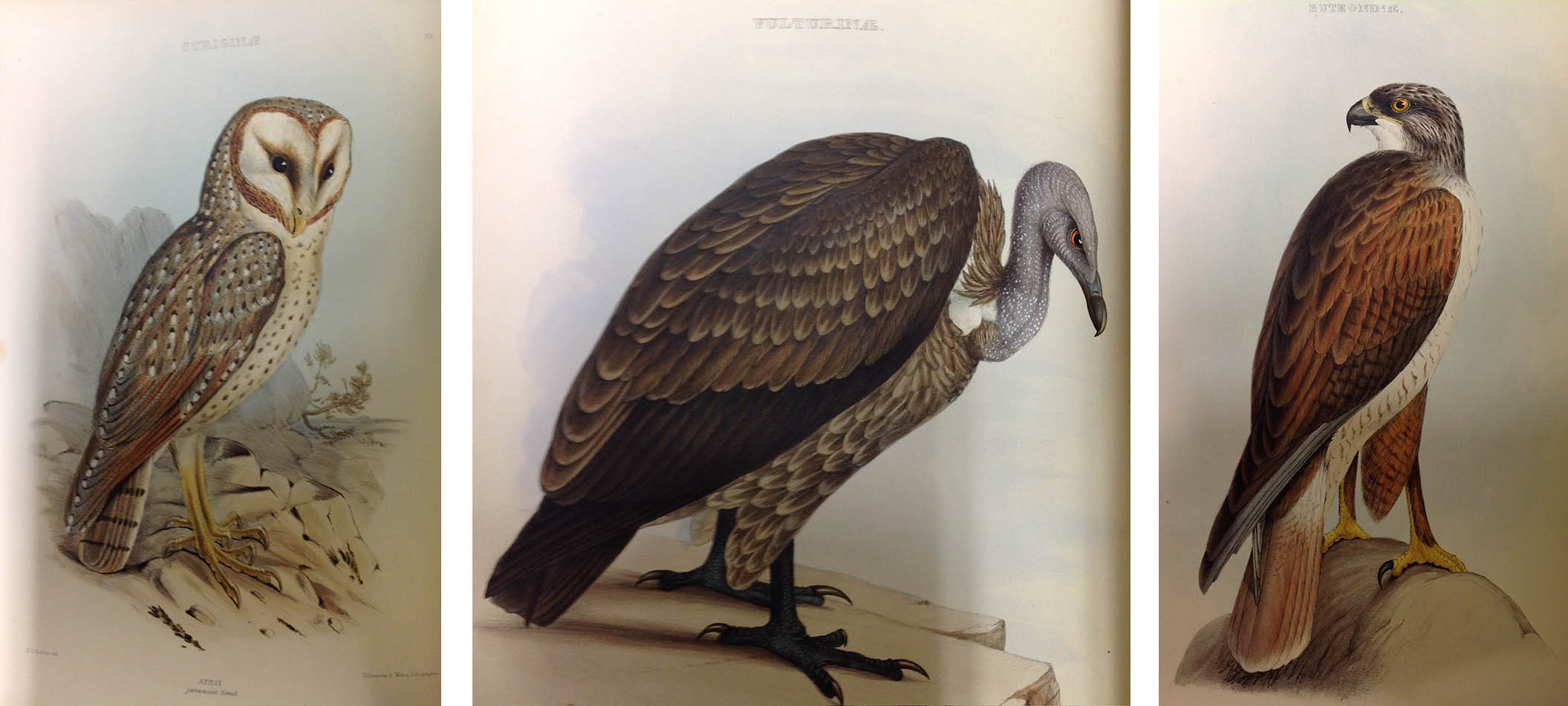
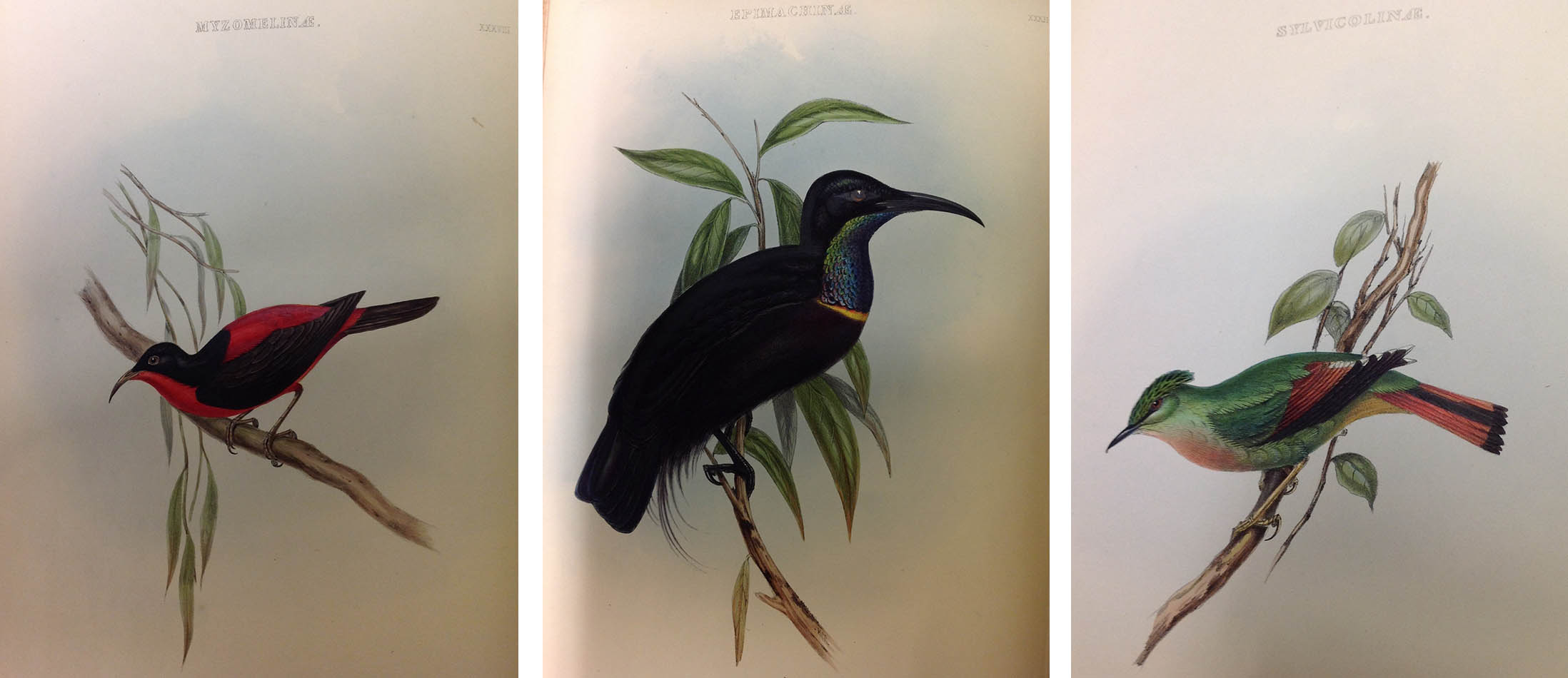
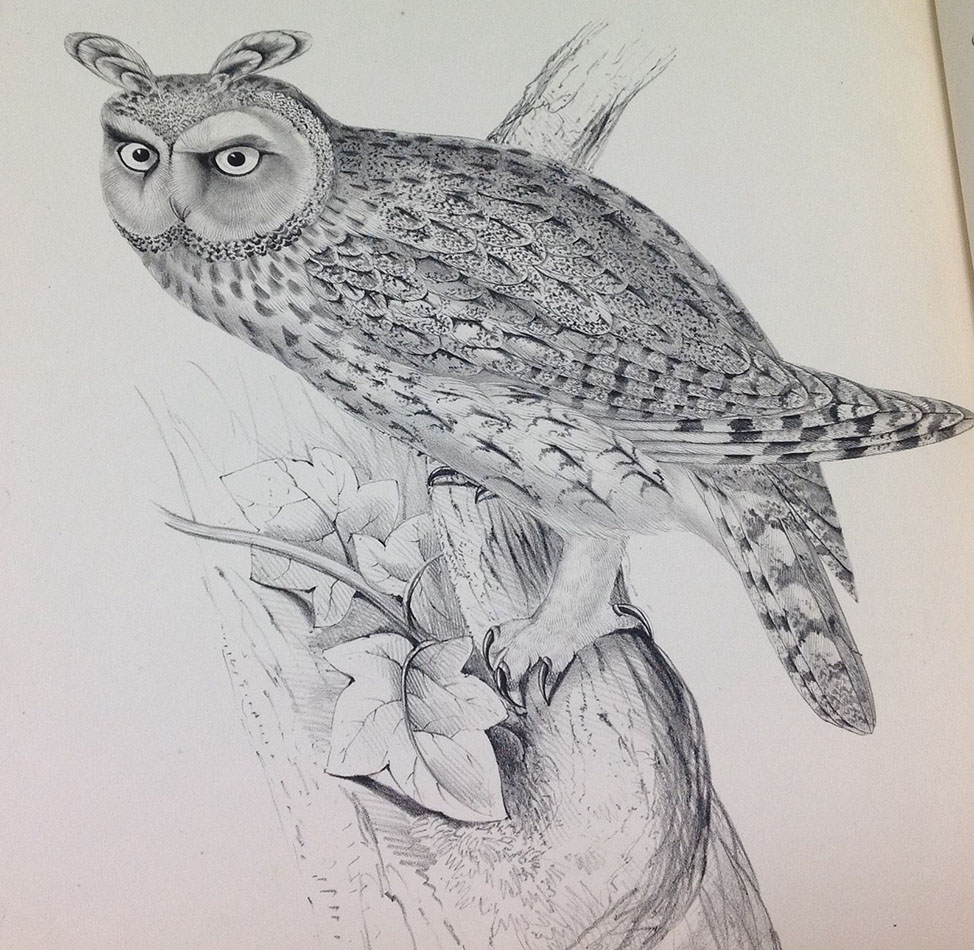
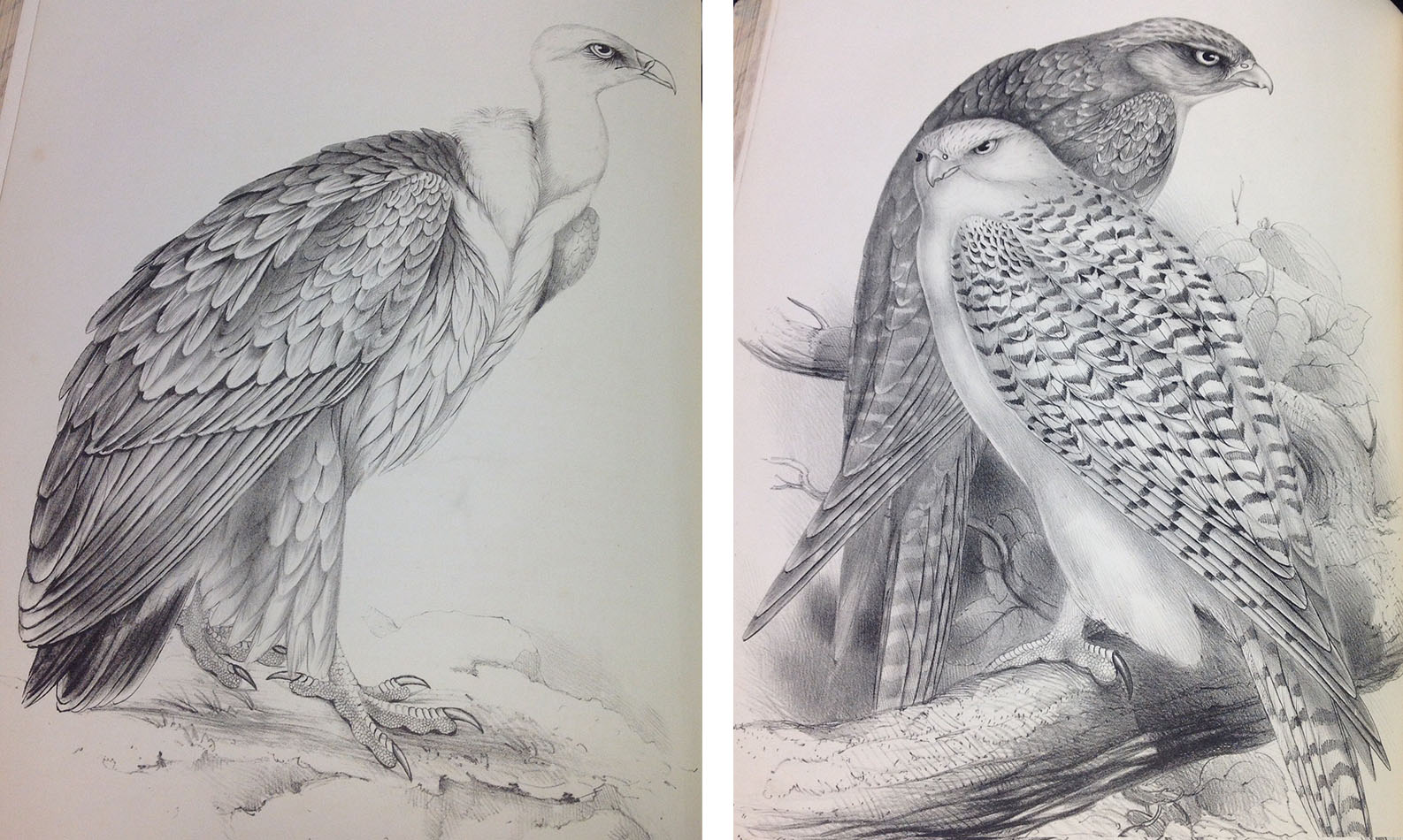
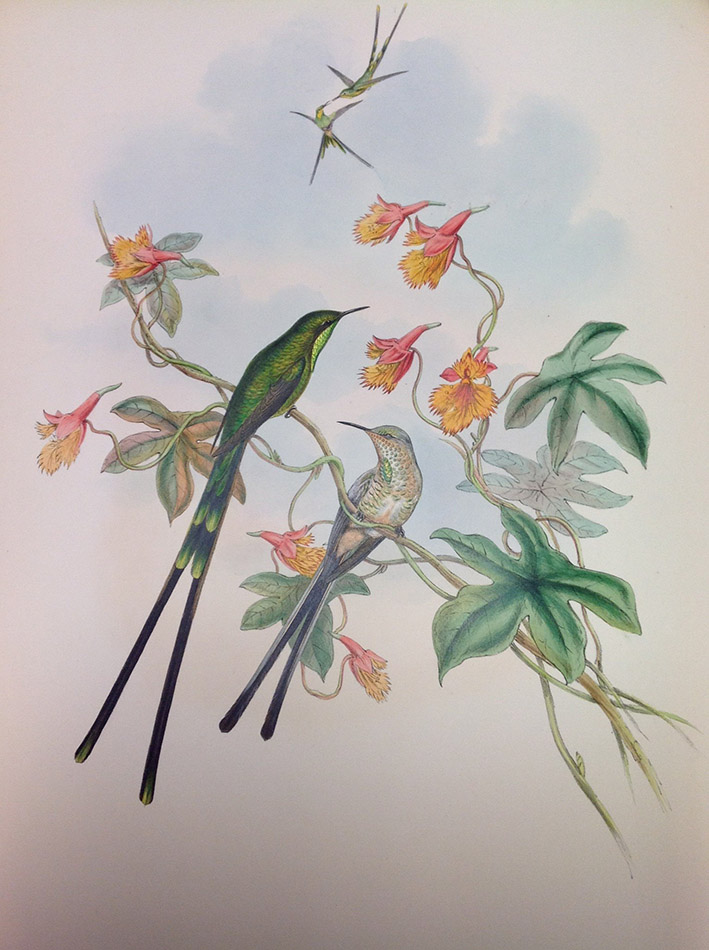
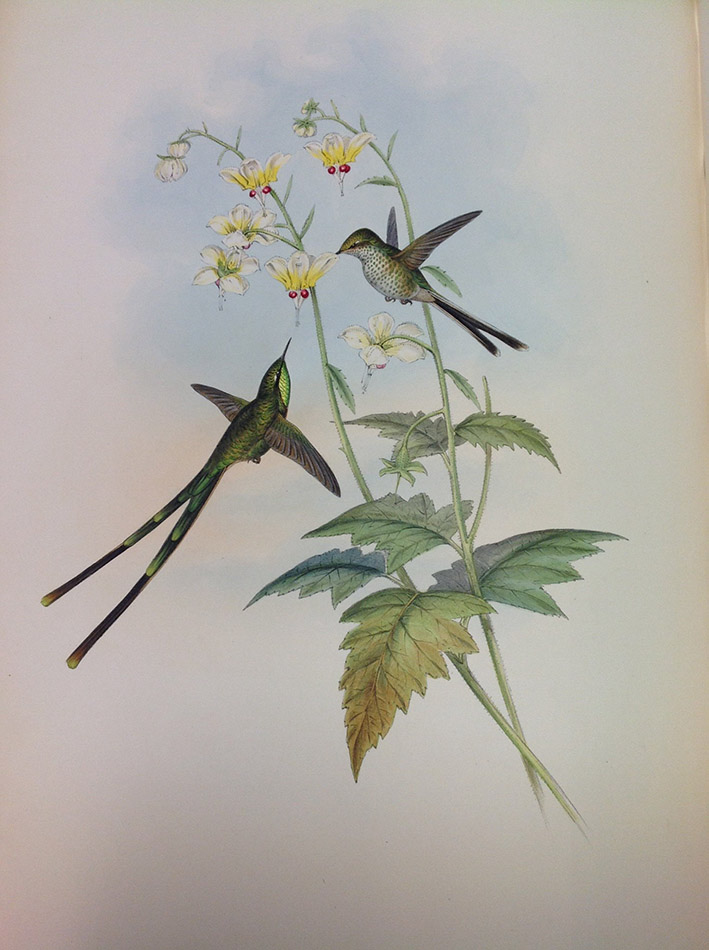
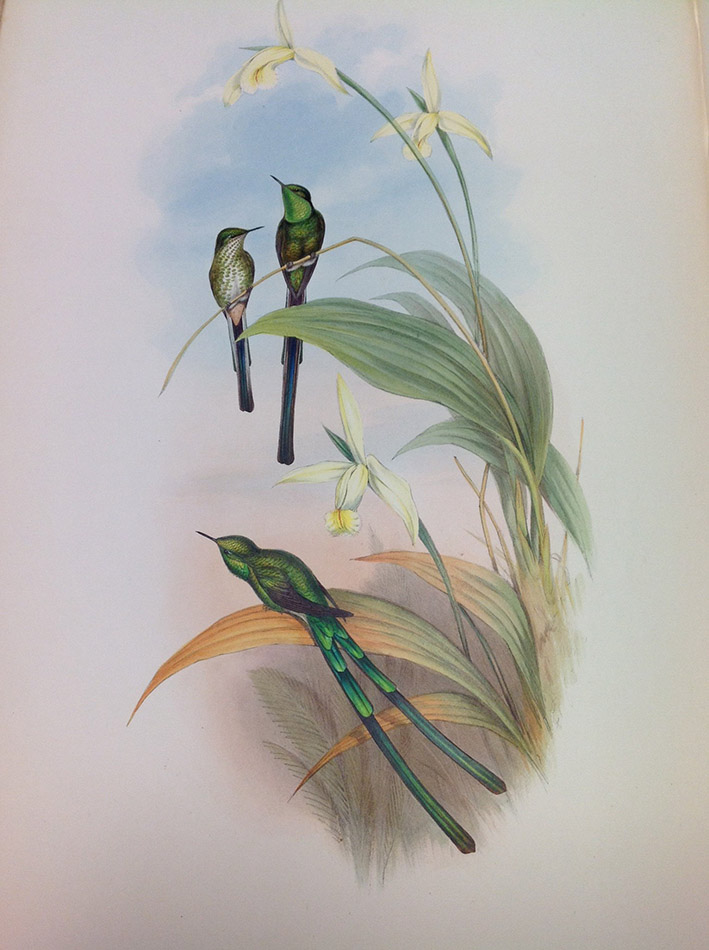
Beautiful pictures!
It is pleasant to see that the DoDo is highlighted in your library Indeed, this bird is originated from Maurituis and is typical of our island and the other bird is beautiful, christiane,
[…] melalui Show and Tell – Bird Books and Resources — Echoes from the Vault […]